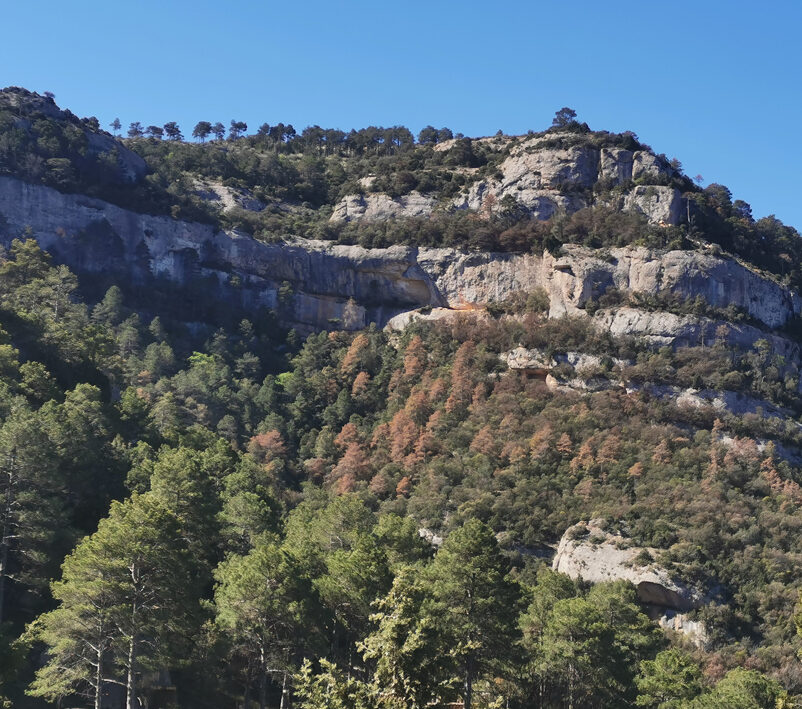Climate change exposes forests to more pathogens, according to a new study led by JRU CTFC-Agrotecnio-CERCA researchers
In recent years, the European black pine forests of Catalonia seem glum: many pines have suffered severe defoliation, which has led them to stop growing. It might seem that the current drought situation is to blame, but according to a new scientific study, pathogens are to blame.
The study, published in open access in Ecography, dives into the complex interaction dynamics between two pathogens: Diplodia sapinea (causing pine shoot blight disease) and Dothistroma pini (causing red band disease). These pathogens affect one in five trees of European black pine forests in Catalonia. For the first time, the research shows how two pathogens simultaneously affect tree health – unlike traditional studies that analyze pathogens in isolation.
In the study, the research team focused on 66 stands of European black pine (Pinus nigra) forests in the Pyrenees. The results show how the pathogens have different ecological patterns, with Diplodia sapinea affecting mainly warmer and drier areas, while Dothistroma pini shows no climatic restrictions. Thus, according to the study results, as temperatures rise due to climate change, more forest areas will be affected by pine shoot blight disease (caused by the fungus Diplodia sapinea).
“This comprehensive approach not only improves our understanding of forest health dynamics but also provides valuable insights for the management of regional forest ecosystems,” explains Jonàs Oliva, researcher at the CTFC-Agrotecnio-CERCA Joint Research Unit and professor at the University of Lleida.
The work shows that both pathogens exert additive effects on crown defoliation in adult trees, which leads to a limitation in their growth, and a total stop if it is prolonged over time. “This generates associated problems since there are spores of the pathogens that are falling on the seedlings, slowing the regeneration of the forest,” explains Maria Caballol, first author of the publication and doctoral student at the University of Lleida.
The team also observed that the smaller size of the seedlings and their greater vulnerability to environmental stress factors amplify the influence of the Diplodia sapinea fungus (the cause of pine shoot blight disease). Thus, this fungus affects up to 17% of the regeneration of European black pine forests and masks the impacts of red band disease caused by Dothistroma pini.
The high pathogenic impact on pine seedlings results in increased regeneration of other vegetation types, such as oaks and shrubs. “These changes in the vegetation structure compromise not only the present but also the future of the forests,” states Oliva.
Overall, the research highlights the importance of understanding the interactions between multiple pathogens and their effects on forest ecosystems. By considering these complex dynamics, researchers and managers will be able to better predict and manage forest health at a regional scale.
Further information:
Caballol, M., Serradó, F., Barnes, I., Camarero, J., Valeriano, C., Colangelo, M., Oliva, J. Climate, host ontogeny and pathogen structural specificity determine forest disease distribution at a regional scale. Ecography 2024 https://doi.org/10.1111/ecog.06974
Last modified: 6 May 2024










